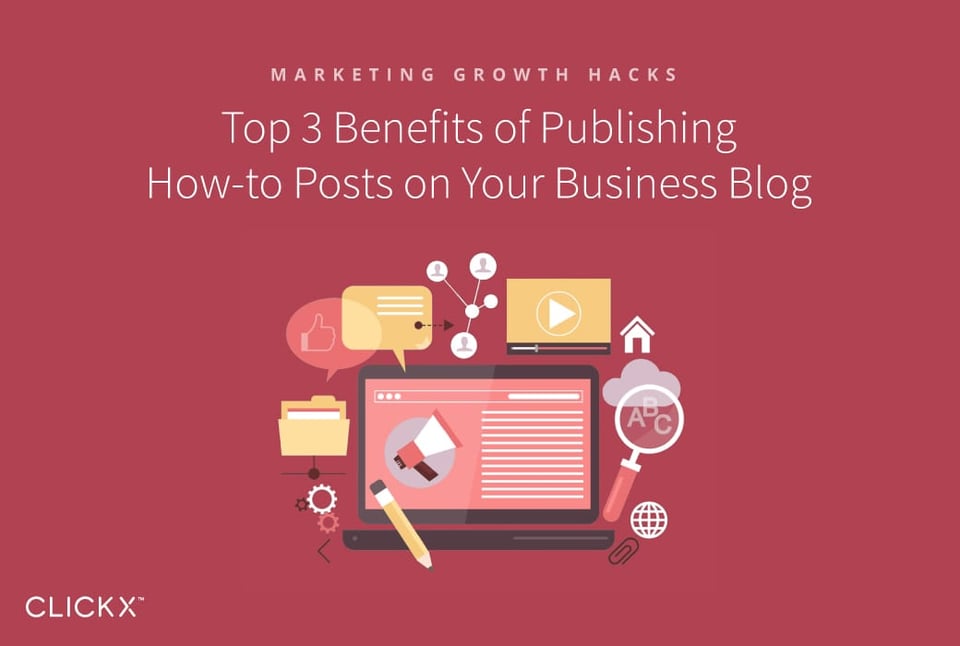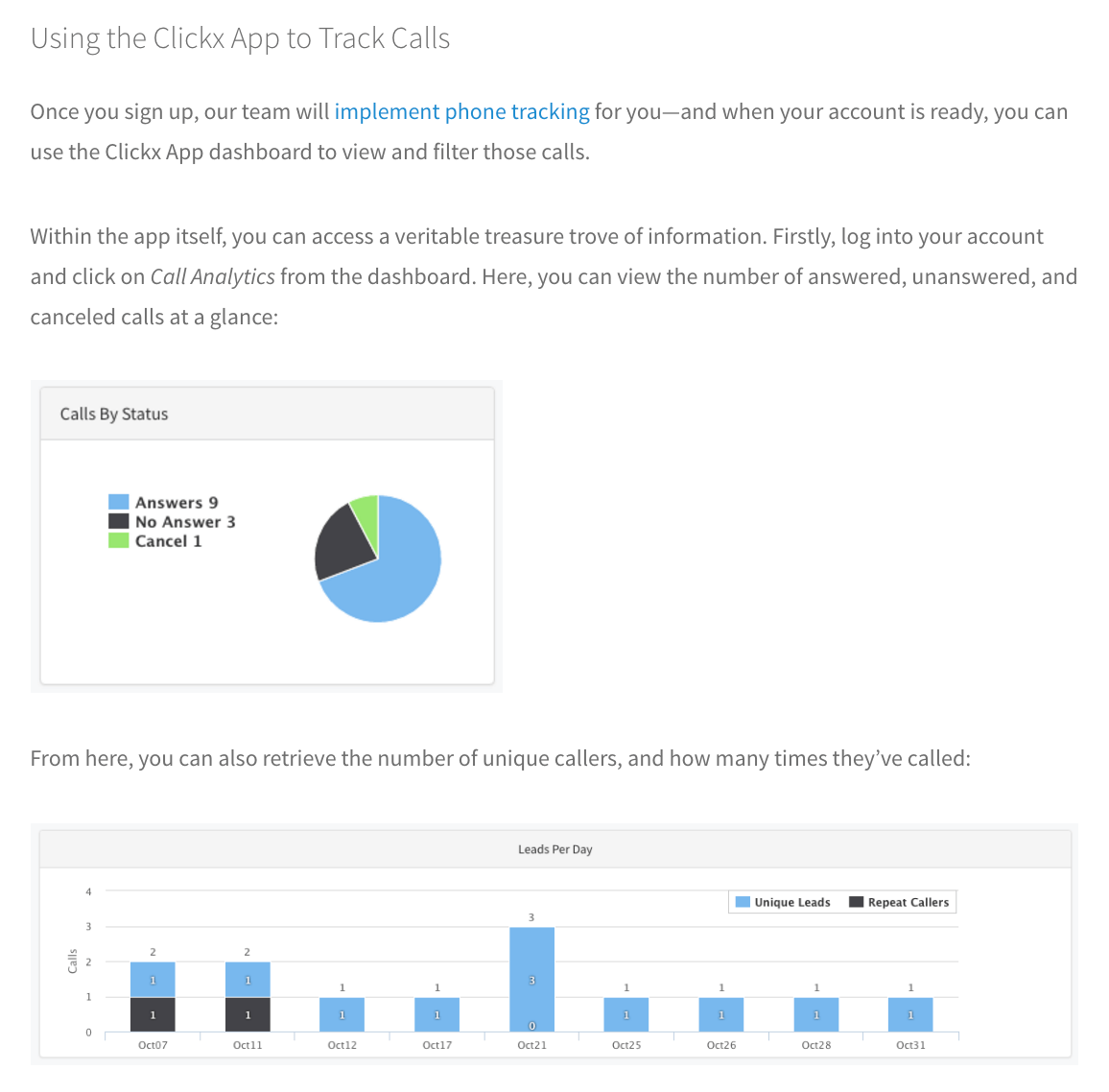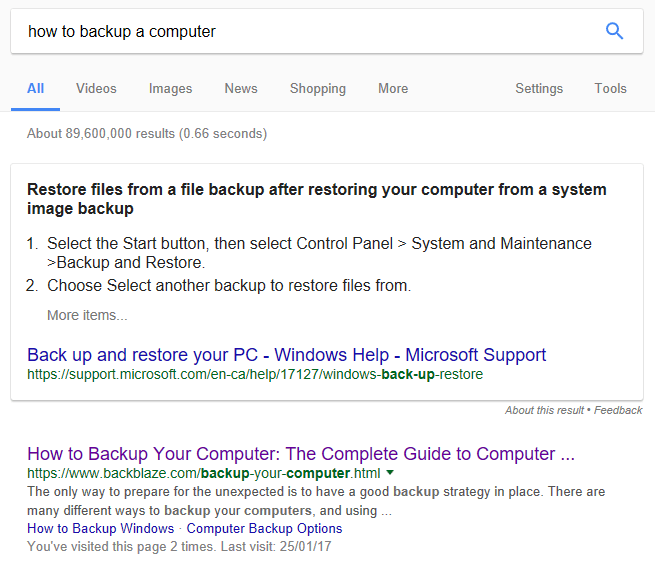Top 3 Benefits of Publishing How-to Posts on Your Business Blog
Your content marketing strategy should revolve around high-quality, useful material, which is why we recommend considering how-to posts as your cornerstone content. We’ve talked about how to write how-to posts before, but haven’t focused on why they are so important.
In the past, SEO was all about bulk—keyword stuffing, massive numbers of backlinks, and multiple spun articles. Nowadays, it’s all about content marketing. You want quality content that earns relevant backlinks and brings in qualified leads. How-to posts fit the bill perfectly, just about every time.
In this article, we will explore the top three benefits a how-to post can provide your business. Understanding what purpose they serve will help you write them with the appropriate end goals in mind. Let’s get cracking!

Key Takeaways
- How-to posts address customer problems, which can result in a boost in repeat sales.
- How-to content also increases trust, which can make or break a sale.
- Useful content provides free help to the reader, which should attract more qualified leads.
- How-to posts lend themselves to actionable keywords, and can therefore improve your search engine rankings.
Benefit 1: Address Existing Customer Problems
When you start thinking about writing how-to posts, it’s natural to want to solve the problems of your future customers. After all, you want to attract new business! However, the smart play would be to consider writing content for your existing and past customers.
[Tweet “Play it smart by writing content that addresses your existing customers’ issues.”]
Existing customers are nine times more likely to follow through on a sale than a first-time buyer. Plus, your top customers will likely spend much more per order than a new one.
The easiest way to start thinking of powerful how-to topics is by addressing your customers’ questions. For example:
- How do I make my purchase last?
- What are the steps for proper care?
- How can I tweak this to be more effective for my situation?
If you’re stuck for ideas or want to be even more thorough, you can also:
- Connect with the support team to understand what frustrates the customer the most, and what instructions might help them.
- Visit product forums to see what kinds of questions people ask about how to use your products.
- Look at review sites to find out what customers are bothered enough by to mention it in their review.
By getting in touch with your existing customers’ needs, you’ll be serving future customers at the same time.
Benefit 2: Acquire and Retain New Customers
Imagine you have a customer on the fence about a purchase; they aren’t sure how to use your product or service.
Clear information about how to use your product can never be a bad thing. More likely, being able to show off in-depth answers to their many questions in an accessible format will tip the scales in your favor. This kind of communication may be the deciding factor for that customer.
[Tweet “How-to content builds trust and may be the key component in landing a sale.”]

Here at Clickx, we practice what we preach!
This essentially takes the first idea of addressing customer problems to the next level. To carry this out, you’ll want to create an entire content strategy around this one concept, rather than cherry-picking for different post ideas.
So, build up a whole category of how-to posts for your products and services! A few examples for each one might be:
- How to set it up
- How to use it
- How to maintain it
Roll out posts in a logical order and make sure you add links to earlier and later posts for easy reference.
Benefit 3: Capture Early-Stage Leads
Everyone wants free stuff, especially useful free stuff. A how-to for your business is just that—a free set of instructions related to a service or product the reader may be interested in.
For example, let’s say you sell wrenches. A wrench is a fairly simple tool, so it would be easy to think you only need one how-to post. However, you can approach it from a different angle. Instead, try writing how-to posts about how to do lots of different things using wrenches.
[Tweet “How-to posts can serve as the first step in your sales funnel.”]
To make this work, consider how-to posts as the first step in a sales cycle that brings in qualified leads. A qualified lead is someone who has been taken through a series of increasingly specific steps. Ideally, when they reach your final sales call, they are the type of client who will go through with the purchase. The process works like this:
- Create an opt-in offer related to the sale
- Build trust around the topic of the potential sale
- Close the sale
Your how-to can serve as the “offer” that targets customers at the beginning of the process. If you want to go the extra mile, turn it into an e-book with bonus information, and offer it in exchange for an email address.
The how-to will also build trust early on by proving you are a knowledgeable authority in your industry, and willing to help your customers.
Bonus Benefit: Target Strong Keywords
Coming up with and writing content around strong long-tail keywords can be challenging. However, how-to posts can make this process a lot simpler. This is because many long-tail keywords are directly related to questions people ask their phones (and search engines in general).
[Tweet “How-to articles lend themselves to strong, actionable keywords.”]

In the example above, cloud backup service Backblaze has secured an excellent first page ranking with its how-to post. By targeting actionable long-tail keywords, it’s now in the perfect position to nurture qualified leads.
If you’re wondering how to go about finding the right keywords, here’s a quick summary of our step-by-step method:
- First, create a list of the categories your services fall under.
- For each of those categories, write out a detailed list of situations someone might be in to require each category of services.
- For each situation, write down the specific key phrases that person might search for. For example, if you own a bicycle shop, one might be “How do I realign the spokes of my bicycle?”
- Now, you can write a how-to guide to lead someone to successfully finding the right product or service.
Of course, don’t forget to naturally include your keywords in the blog post!
Conclusion
How-to posts are highly valuable for content marketing, and can serve your business far beyond your average blog content. Given how many different ways they can help your business, we strongly encourage you to consider which how-to posts you should begin publishing first.
Providing readers with this type of content has so many benefits. Let’s quickly recap the ones we’ve talked about in this article:
- Address existing customer problems
- Acquire and retain new customers
- Capture early-stage leads
- Target strong keywords
What other ways could a how-to post help your business? Let us know if you have any questions about getting the most from your content in the comments section below!



